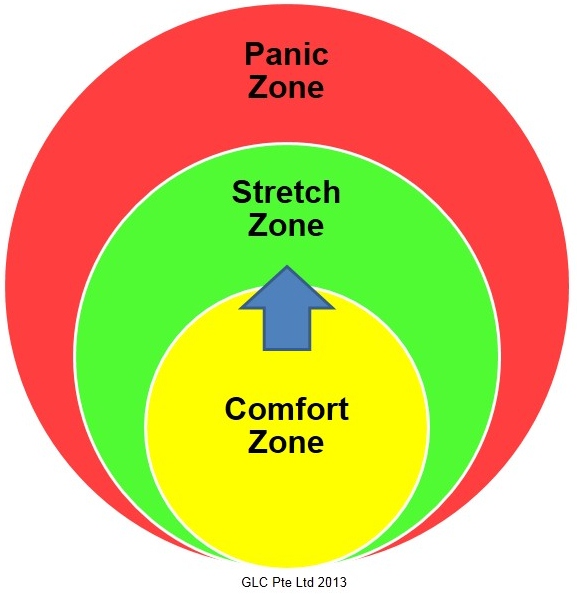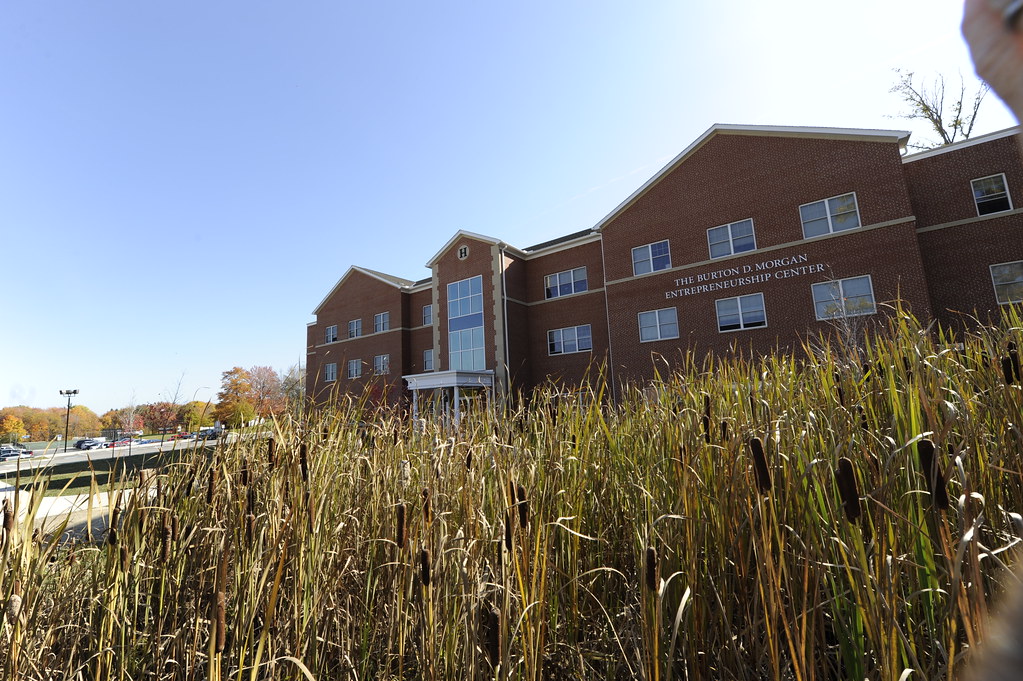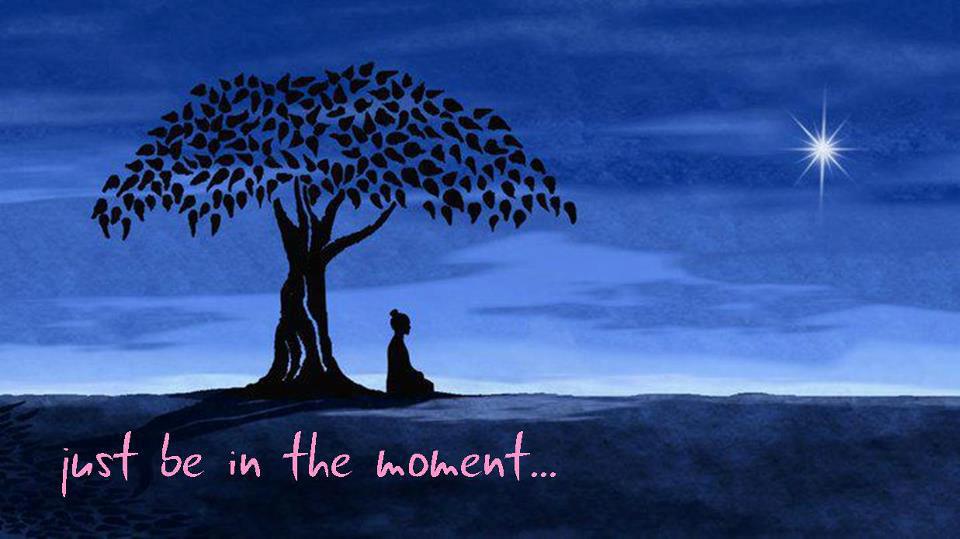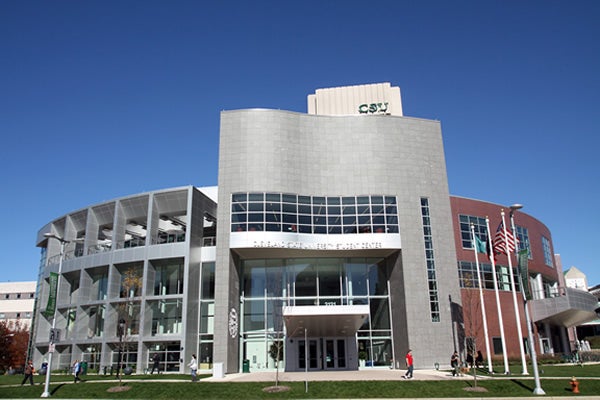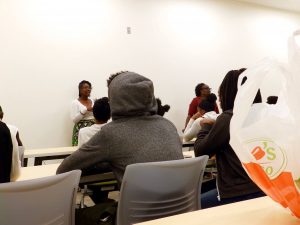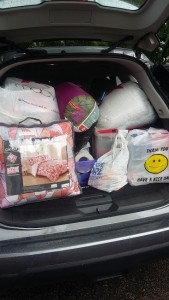July 2018
When July came around, I was halfway completed with the Summer Research Opportunities Program at The University of Iowa; four weeks down, with four more to go! This second month, I finished as much research as I could do, and then the last week was spent wrapping up the program: presenting posters at the annual undergraduate summer research symposium and recognizing all the Scholars for our hard work and contributions. This half of the summer felt like it went by much quicker than the first half.
WEEK FIVE
July 1st – That weekend, there was the Jazz Festival downtown, and fireworks were shooting off at night. Plenty of people flooded the streets of downtown Iowa City to enjoy the sizzling, fuzzy heat and hear some music. Some crowds were huddled all over the lawns on campus with their blankets on the grass. I did not go outside at night to watch the fireworks, but I could hear them from the dorm. A few Scholars did go to see the fireworks, even venturing into the neighborhood of Coralville to view the fireworks displays.

Photo credit: http://www.accalendar17.net/wp-content/uploads/2017/07/iowa-city-jazz-festival-iowa-city-downtown-district-iowa-city-calendar-of-events-logk.jpg
July 2nd –
At the “Grad School Admissions” panel, six graduate students shared their experiences and advice for us. These students were pursuing MFAs and Ph.Ds. in history, higher education & student affairs, and counseling psychology. They spoke on their transition from undergraduate to graduate school; some went straight through with their schooling whereas others had some time off for employment first. Some of these students were people of color, and I really appreciated seeing and hearing from POCs, because these were people like me who went on to graduate school.
Some tidbits of wisdom they mentioned during the panel included befriending your fellow graduate students because it is unfeasible and foolish to not do so, and to email professors and people for letters of recommendation immediately, even though it was summer and school had not started yet. One student said that one recommender should know you well personally, one recommender should vouch for your professional experiences, and one should be a “hard-hitter,” which is someone who is highly respected and esteemed in their field. There should also be a person available at the ready to write a back-up recommendation, in case one of the main three recommenders happens to not submit a letter on time, or at all. The panel was very informational. I made a note to myself to contact my recommenders right when school started in August; I wanted to meet with them in person to talk about our summers and then ask them if they would be willing to write me letters.
July 3rd –
We had a GRE study session in the evening.
July 4th –
SROP had a Holiday Picnic planned for us, but this was canceled, and we all just had the day off. It was eerily quiet downtown on the actual holiday, with barely any cars passing through the streets. A group of us played a few hours of Dungeons & Dragons and then walked downtown to see what was going on. About a dozen of us spent some time in a frozen yogurt shop, and we played a game called Headbands. Those who were over age 21 went to a bar to play billiards. It was a relaxing day.
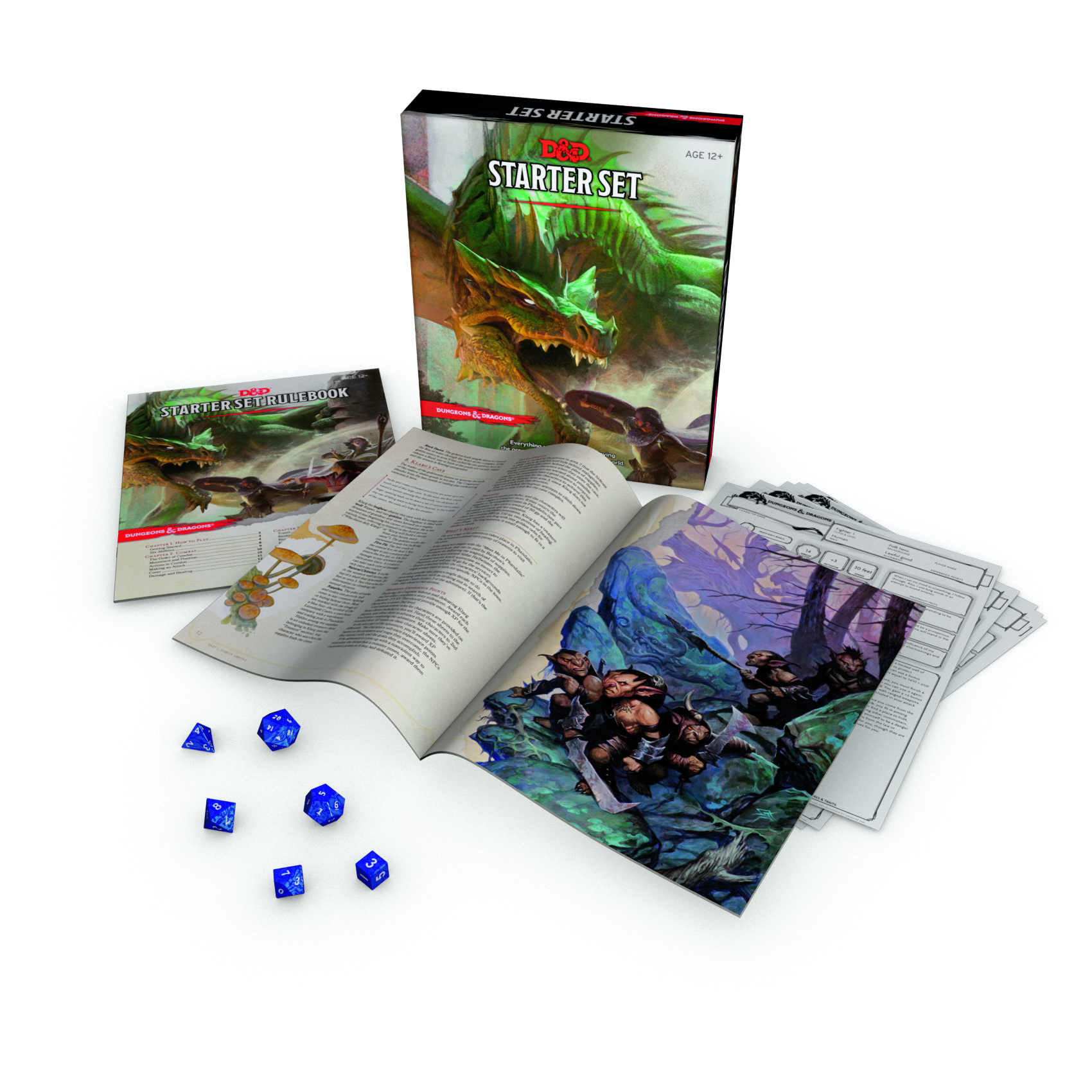
Our D&D group within SROP used this Starter Set to play our campaign.
July 5th –
Our Research Seminar revolved around “Conferences & Publications,” presented to us by a speaker who was very engaging and captivated everyone’s attention as he spoke about types of papers, journals, and authorship. This Chemistry professor was very passionate and stated that this was not a lecture but a discussion; he wanted us to speak during class. Despite it being the end of the day, he did not show any physical signs of fatigue.
I learned that there are three types of research papers:
1) a letter (for general audiences, and the most brief type of paper at two to three pages, including figures and references)
2) a full-length article
3) a review of many articles (this is more rare)
The speaker said that it is common for professors to publish two to ten times a year, depending on their discipline. He also vouched for the value of attending conferences, networking, and attending society meetings. He mentioned that growing a thick skin would be beneficial because “academia is critical of ideas.” What surprised me was that this professor read academic articles every day, including weekends and holidays to keep up with the literature! In addition, journals have impact factors, which are numerical factors for the prestige of the journals. Higher impact factors are better. He also talked about for-profit journals being predatory, as they charge researchers to publish, without thoroughly reviewing the submitted work. Open-access journals on the other hand provide public access to articles; for example, the NIH mandates that NIH-funded research be posted on PubMed, a year after its publication date, so that the public can read this year-old article.
July 6th –
For our Speaker Series, a professor in the Sociology department whose research is primarily on social stratification and public policy! She discussed her research on implicit bias training in some schools in the Iowa City Community School District; her hope is that educators will recognize their own biases (every human being has bias, whether they know it or not) and ensure that their biases do not lead to disproportionate educational outcomes for different races of students.
Students and teachers filled out surveys as part of the professor’s research. Students were asked if they had mentors at school, and if they felt safe and supported, among other questions.
One result revealed that 19% of Black students enrolled in the school districts for 2016-2017, but 63% were suspended. This is an outrageous statistic, and indicates a disparity in disciplining students. Another finding was that white students had the highest rates of race-matched mentors, meaning they were the students who often had a mentor of the same race. Furthermore, LGBTQ-identifying students disclosed that they did not feel supported or understood by their teachers. Even 25% of all students surveyed reported that teachers do not recognize their hard work.
There are multiple areas to address in these schools, and diverse stakeholders must be involved when making decisions. Besides training teachers and staff (the implicit bias training in schools is contracted to last three years), a handful of schools are trying a restorative justice approach to discipline instead of suspending students. Also pertinent is recruiting and retaining diverse staff and students. Yet another suggestion raised by the researchers was to arrange school calendars so that testing would not occur on/near any religious holidays, not just Christian holidays like Christmas or Easter.

Source: https://www.lwhs.org/page/news-detail?pk=1140689
I support implicit bias training for school educators and staff; having grown up in the inner-city and attending public schools for my entire life, and often being the only Asian-American student in class, I witnessed bias and microaggressions from teachers who had little experience interacting with Asian/Asian-American people. For example, I have had teachers insist on knowing where my parents were born, and teachers who commented how my name did not suit me because it was “too American” for me. This lecture spoke to me, and I hope that teachers nationwide can be more educated and aware of their own biases and lack of knowledge and cultural sensitivity.
WEEK SIX
July 9th –
Sunny gave a professional development presentation on “Professionalism on Social Media.” What we post on the Internet has a permanent presence, even if we delete our photos or statuses. We must be vigilant of what we say or share, because you never know who could screenshot something and send it off to other people. Sunny asked us what social media networks we use, from Facebook, Twitter, Snapchat, Instagram, and LinkedIn, to some others. Most of us use a few social media networks! I use a wide array of social networks, and am very connected to the Internet. When I post, I keep in mind that I do have past teachers and older adults as friends or followers of my accounts, so I ask myself if things are appropriate for me to share.
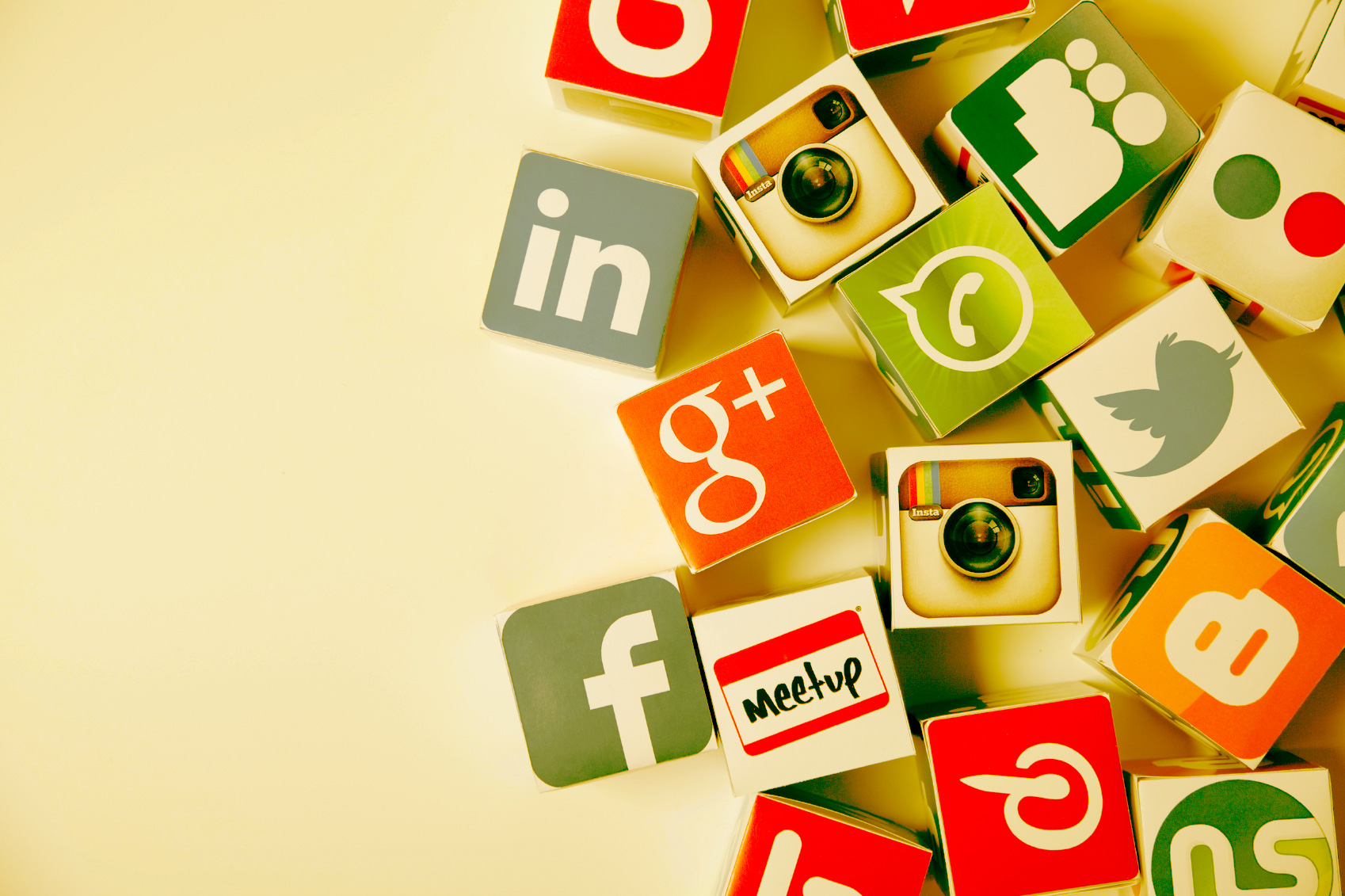
Photo credit: https://ontargetinteractive.com/wp-content/uploads/2017/08/social-.jpg
July 10th –
Another GRE Study Session consisted of practicing vocabulary words and doing practice problems from our Kaplan books.
July 11th –
The evening session “If I Knew Then What I Know Now“ was a speed meeting with past SROP students who were in graduate school. The scholars were sitting at six tables, and we sat down the entire duration, while a graduate student circled around to each table every 10 minutes, and each of them had a specific topic to discuss with us.
One student, Maya, did SROP at University of Iowa some years ago, where she studied African-American mothers and stress. She talked about “building your cabinet” of people, or basically a support system.
Charles was pursuing a Ph.D. in higher education, and commented on “wearing multiple hats” and juggling various responsibilities. He aims to be a faculty member and administrator for student affairs. When he finished reading for the day, he would then focus on self-care and play basketball as his reward.
Nicole is in the process of achieving her MFA in Painting and Drawing, a three-year program. She talked about “department politics” and power structures.
Danielle was in her Ph.D. program for civil engineering, and was researching flood predictions. She commented on being a “Teaching Assistant (TA) versus Research Assistant (RA) versus Graduate Assistant (GA)”. TAs are popular for science disciplines while GAs are commonly found in the social sciences and liberal arts. She is an RA, and wants to do consulting after her program. She is also involved in graduate student government, so grad students can still be involved outside of the classroom! Danielle mentioned that she is the only woman in her classes, which is still a reality in STEM, but is slowly dissolving.
Lastly a student who I think was named Deron (De’Ron?) discussed “time management” in his MFA for printmaking program. He suggested we try to complete assignments one to two weeks before the given deadline, to allocate more time since procrastination is real. He was attracted to UIowa’s program because of the funding and stipends; also, the school’s printmaking program is third in the nation.
I was impressed by the diversity of graduate students and how they all came from various fields and states; a few went straight from undergraduate to graduate school, and it was interesting to hear all their perspectives.
July 12th –
This Research Seminar was on Poster Construction Do’s and Don’ts. Scholars were given a guide for designing our research posters, which we would present at a conference just less than two weeks away. We also received several handouts showing different posters; we went through almost all of them and critiqued each poster. All posters should be concise, with minimal wording and carefully curated diagrams or photos.
Elements of a poster should include, but are not limited to:
– Abstract – Why was this research necessary? What happened? What were the results? What are the implications for this research? This should be a short paragraph or two and should be easily understandable by anyone who reads this abstract.
– Introduction – What is the issue being addressed? What is the gap in the literature?
– Hypothesis – What do I predict will be the outcome(s) from the research?
– Methods – What methods did we use for the research? Was it qualitative or quantitative? This should be very specific and delineate how this research was conducted.
– Results – What were the results? Diagrams would be helpful here in visually representing the results.
– Conclusion – This section is a summary of what the results suggest and what future directions can be taken.

This is a sample research poster from my very own university! White space is necessary for a poster. There should be a balance between white space and the amount of text and images on a poster. It should overall look neat and have an organized structure.
There should be some models/diagrams/photos on the poster so that it is not entirely composed of text. People need to see visuals! Visuals can help draw people in and also aid people’s understanding of complex concepts. Some other elements could include Discussion and Literature Review. References are also another popular section. For my poster, I add in an Acknowledgements section, because I always want to give thanks to people who have helped me with my research. Furthermore, I have to thank Professor Welburn and Sean for allowing me to help them with their project and giving me guidance.
When presenting a poster, there are also some guidelines. Students should practice presenting the data in front of peers, before they present at a conference. Do their peers understand the information and can logically follow the points made on the poster? Students should prepare a two-minute version and five-minute version of their poster speech. They also should not simply read off the poster, but briefly explain the research and then give specifics if people ask. Another piece of advice was to be enthusiastic and lively about the research and the work accomplished. If people come up to you and see that you are energetic and excited, they would feel like you really care about the topic.
This lecture’s presenter also showed us sample letters of recommendation that he wrote for students he has worked with. He even handed out a copy of a student’s personal statement for a Ph.D. program. It was very insightful to read these papers and get the perspectives of a recommender.
July 13th –
A Biochemistry professor spoke to us on the molecular mechanisms of epigenetics. She introduced herself and her educational background. She spent four years in undergrad, four years for her PhD, six years doing postdoctoral work, and five years ago, she established her own lab. Then she gave us a mini lecture on her work. She explained how she studies how epigenetic factors influence gene expression and how the environment (stress, nutrition, exercise, etc. impact a person’s epigenome).
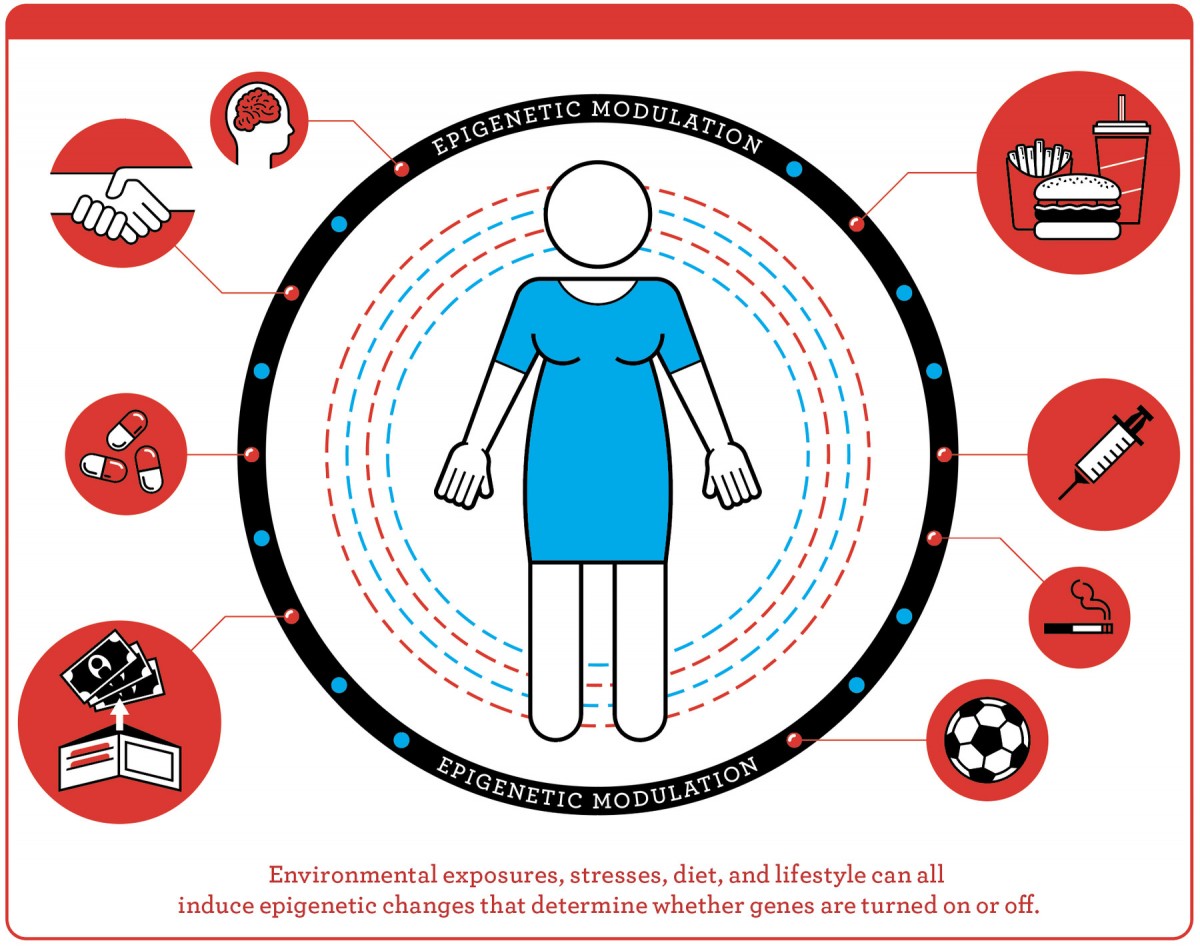
Source: https://harvardmagazine.com/2017/05/is-epigenetics-inherited Learning about epigenetics reminded me of public health, and how environmental exposures and other facets of people’s lives impact their health, even the health of generations of offspring.
Although I took introductory biology and chemistry courses, I never had instruction on epigenetics, so this material was new to me. A fact I learned from the lecture was that there is evidence that genes from a famine in Denmark are affecting people today. The professor said that epigenetic marks are reversible and have substantial therapeutic potential. Her lab works to understand more about chromatin biology and human disease, and help develop therapeutics, which are used for people suffering from disease, pain, or injuries. The professor noted that when seeking funding for research projects, the funders need to be motivated and excited about your topic or your research. I will keep this advice in mind, not just for when I am applying for funding for my research, but for scholarships; I have to make readers excited for me and want to help me achieve my goals.
WEEKEND –
Scholars who had missed a session for various reasons were required to volunteer with Habitat for Humanity again. This was no issue for me; I appreciated the opportunity to get to help out at the warehouse area. We helped restock furniture, move furniture around, assemble some furniture and appliances (lamps and lighting fixtures in particular), measure door frames, sort recyclables, and unload a few truckloads of even more furniture. It was my first time going inside a Habitat for Humanity ReStore, and seeing the array of items that people donated and would be eventually reused. We even built a bunk bed. Furniture sold here is marked at affordable prices. For furnishing my own homes/apartments in the future, I now can add a Habitat for Humanity ReStore to the list of places to visit.

This is just one small area of the large warehouse of the Habitat for Humanity – Iowa Valley.
WEEK SEVEN
July 16th –
Natalie conducted our session on self-assessments; it was called “Know Thyself.” This was important because we have to know who we are to write our personal statements and to express ourselves in interviews. She started with asking us if we can define ourselves in one sentence. Statements from scholars like “I am 21 years old,” “I am studying [insert subject/field],” were shot down. Natalie inquired, “What if education and everything else was taken away from you? Who are you then?” What were we besides students?
“You can exist without your achievements.” This statement spoke volumes to me. I am more than my almost-perfect (3.966) GPA, my leadership activities, and my honors and awards. We must not define ourselves by a test score or other numbers or accolades. I define myself by values like “trustworthy,” “caring,” “kind,” and “inquisitive.”
Natalie gave us each a worksheet and a paper with a long list of values, from A-Z order. Using values from the list, we first listed five values that are the MOST important to us, then five values that were important to us, and finally five values that were the least important to us. Furthermore, Natalie wanted us to jot down why these values were important to us and how do we use these values or employ them in action.
My most important values are, in no particular order:
– Adventure
My life craves excitement and discovery. I want to travel the world and to different nook and crannies in America. I love adventure and learning about the world around me. So far, I have done some traveling, and that has kept me eager for more adventures.
– Happiness
I strive to be happy, and this has been a great area of struggle for me, with so many challenges I have encountered in life. Happiness is a universal feeling, but oftentimes I do not find myself in a happy state. To try to achieve this value, I spend time with loved ones, and they contribute positively to my mood. I also can make myself content when I am not with other people; blogging is a source of pride and happiness for me. Helping other people generally makes me happy.
– Friendships
What is life without friends? I have made many new friends in college and they have enriched my life. They have supported me and helped me get through school, and I have just had fun with them as we explored Columbus and hung around school. I make sure to see my friends at least once a week, and I often have a class with at least one of them!
– Family
My family have always been a part of my life, and they are there for me when I need them. My family has helped get me to where I am today. I make time to see my family a few times a semester. I return home for one to two weeks for winter break. Sometimes I am busy traveling to new places and forgo visiting Cleveland. Still, I call my mother once a week, mostly on the weekends, so I can hear her comforting voice.
– Knowledge
Education is one of my lifelines, one of my necessities just like blood. I call myself a lifelong lover of learning; I will always be reading books and online articles to better myself and increase my knowledge of various topics. Many subjects catch my interest. I have a major and two minors because I want to be more well-rounded and educated. While traveling, I try to visit a few museums so I can deepen my understanding of art, history, and different cultures.
For my one-liner, which I did not share out loud with the class but silently wanted to, I wrote down,
“I am someone who found her strength from her struggles.”

Photo Source: https://graceoutreachcenter.files.wordpress.com/2013/07/what-defines-you.jpg What defines you? Can you describe yourself succinctly in one sentence?
July 17th –
We had our usual GRE Study Session, which we all attend after we eat dinner at Burge Hall.
July 18th –
This day, I had a draft of my research poster ready and talked through the layout and content with my mentor, Professor Welburn. I sent her a PDF of my poster and she printed it; I would pick it up later in the office of the Sociology department.
For our session, we had Research Roundtable presentations. We printed out copies of our research abstracts to share with the Scholars at our table, and one faculty mentor/member from University of Iowa was present at each of the four tables around the room to hear us present our abstract and our research projects, and provide us with feedback. This was preparation for the conference next week, and it was also one of the most stressful sessions for me, since I do not like presenting in front of others. Nevertheless, I appreciated getting the chance to hear what my peers were doing and how some of them are really strong presenters and seem to not show any anxiety in front of audiences. Each table would select the scholar from that table who presented the most well, and to eventually stand in front of the entire room to present once more, and be judged. The four scholars presented and the four faculty members decided who was the best presenter. The scholar with the best oral presentation of their research that night was a fellow Buckeye, who I did not meet or know until we both began SROP together in the summer.
July 19th –
Our scheduled session was cancelled, so Scholars had this day to work more on research.
July 20th –
Our last Speaker Series session was presented by a professor in Astronomy and Physics. That night, we had a SROP Talent Show, where scholars had a space to show off their talents and skills. One scholar did a dance and later that night, a SROP-themed parody of an R&B song. Another scholar played his own musical piece on his flute; throughout SROP, when we walked down the hallways of our dorm floor, we would hear his whimsical flute-playing. Another scholar sang a cover of Amy Winehouse’s “Valerie,” and one scholar presented a slideshow of her artwork and she even completed a painting during SROP, and passed this around to the audience. I also volunteered for the talent show; when I submitted my name that I was participating, I only had in mind that I would perform a poem. After I elected to be a part of the show, I hurriedly began to brainstorm my poem. It was finished in two days, and then the few days before the show, I was revising the poem, only allowing two SROP scholars to read it and provide me with feedback. The talent show overall was very fun, and just like how multifaceted and unique each of us scholars are, our talents are different as well.

The Arts Building West building holds the Art Library. It is a tranquil place to study. The small pond sometimes will have ducks splashing around in it.
A link to my poem is found here:
https://docs.google.com/document/d/1lOQTGLslC5KJqb4pMxXsraARf24LRaubsaPxletvm3w/edit?usp=sharing
WEEKEND –
On July 21st, Scholars took a GRE Post-test, from 10 am to 2 pm, to compare our scores from the beginning of summer. I was relieved to earn higher scores for both the quantitative and verbal sections. However, the test we took was the same as the diagnostic test, except I did have some unfamiliar sets of questions because I knew how to answer a few previous sets. I scored in the 80th or so percentiles for this test, an improvement from last time when I scored in the 44th and 70th-something percentiles. When taking practice tests, I did not write essays, but in hindsight, perhaps I should have spent the time to do so. We printed off our results for the SROP staff’s records.
WEEK EIGHT
July 23rd –
Graduate assistant Sunny presented a session on self-care and support. For this interactive session, Sunny strongly encouraged us to discuss with him about our perceptions of self-care and what questions we had about the topic. We defined what self-care means for us. One scholar said for her, it meant “treating yourself.” Others said that for their self-care, they needed “music,” “solitude,” “stopping and thinking,” and “hanging with friends.” We then did self-assessments, which I believe were related to stress.
During the session, I took some notes related to self-care:
“Start a compliments file.” Sunny practices this activity, and I actually did this back in middle school when I would screenshot compliments that people gave me online. If someone posts something especially sweet and meaningful to me online, I still screenshot it and keep it on my phone in my Photos album.
“Mini-meditation.” I do not currently practice meditation, but it can be something simple and not even time-intensive. It could be something I do right before bed, or when I wake up.
“Unplug for an hour.” My world revolves around using technology and staying connected to my networks through my phone or laptop. I am almost always looking at a screen, if I am not sleeping or doing my personal hygiene routines. I even scroll on my phone as I eat though, so my everyday life activities seem to be consumed by my use of technology. However, by playing games with my friends, I am engrossed in the games and end up not using my phone. Unplugging can be a challenge, especially when I love social media and want to see/know what other people are up to. Unplugging is important and I hope to remember to engage in activities that do not involve me using technology.
“Notice your breathing.” By noticing my breathing, and focusing on only that, I can calm myself down.
“Walk around outside.” This is important and should be done daily. I am sure I can commit to this action and get my daily dose of fresh air.
Near the end of the session, we created our own Distress Tolerance Boxes, which are boxes containing items for self-care and stress-relief. Sunny brought some mini boxes that resembled rectangular take-out containers. He also had some rocks engraved with words like “Friendship” and “Love” and some Chinese finger trap toys. There was also some candy to stash in the boxes. We could decorate our boxes with construction paper and markers. While I liked the concept of the box, I knew I would not be able to bring a box with me in my luggage or in my backpack. I then came up with the idea to make the box into a care package to give to individuals suffering from homelessness; there were some we encountered in Iowa City, and I felt like presenting them with a small box containing goodies and toiletries would be very helpful for them and make their days.
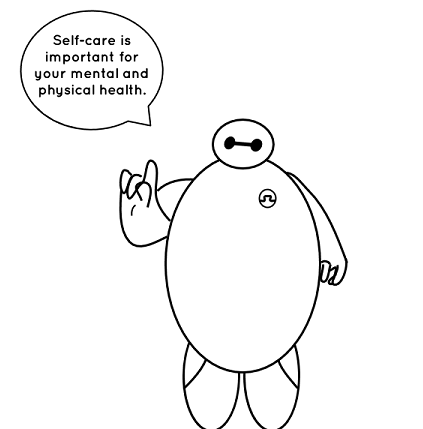
Photo source: https://68.media.tumblr.com/acdc653d145b2cdc879b98933da1d78a/tumblr_nvexc6eF2W1uhd96jo1_500.png A personal care robot from the Disney film Big Hero 6 wants to make sure his owner is taking care of himself. Likewise, he wants others to monitor their wellness, from physical to mental.
July 24th –
Instead of GRE tutoring and preparation, all the Scholars were in one room and we learned about some handy and helpful websites to aid us for graduate and/or professional school.
These websites are:
beyondtheprofessoriate.com – career advice for PhDs, by PhDs – this requires money to join
myidp.sciencecareers.org – my Individual Development Plan – an account must be created to access materials –
The site provides the following:
- Exercises to help you examine your skills, interests, and values
- A list of 20 scientific career paths with a prediction of which ones best fit your skills and interests
- A tool for setting strategic goals for the coming year, with optional reminders to keep you on track
- Articles and resources to guide you through the process
Imagine PhD – https://www.imaginephd.com/ – FREE career exploration and planning for the humanities and social sciences. An account must be created to access assessments and other resources
versatilephd.com – Helping graduate students and PhDs envision, prepare for, and excel in non-academic careers since 1999
They have a PhD career finder, discussion boards, job listing boards, local meet-ups and more.
Slack – https://slack.com/ – a chat app used by graduate students to collaborate and to chat, and is also utilized by teams/groups of people in workforce and business
This is FREE for small groups of people, for unlimited time. The other two plans cost money, monthly.
The GRE instructors we had for the summer informed us to go to conferences, to look at success stories, and to not let the competitiveness of a program deter us from applying! They also told us about academic Twitter; we could have a separate Twitter account for academic and professional purposes, to network with other people in our fields and disciplines and to share our achievements, aside from our personal and private accounts.
July 25th –
We had a SROP Closing Luncheon, where Scholars and their faculty mentors and some graduate students had lunch together and mingled. Ms. Diana gave a speech and thanked everyone for being in the program. At the end of the lunch, I presented my poem!
After this luncheon, the summer undergraduate research conference (SURC) began; it was from 1 to 5 pm, and students were placed into one of two sessions, so they were not presenting for a full four hours, but only two hours. Still, I was extremely anxious and did not want to present. I often have a concern that my research is not good enough, that I did not get enough research done and could have done mucmore, and other worries. I had several people stop by my poster. One sociology student who was at University of Iowa came up to me to discuss my research. I even printed out 20 business cards to hand out to people.

I appreciate the poster having a glossy finish. It should be resistant to water and other damages. It is also text-heavy, which can deter people from approaching the poster. I just like providing ample information for people.
July 26th –
This was a free day for many scholars, besides our awards ceremony that evening. Some scholars were busy printing their posters somewhere around campus. With two friends and my SROP roommate, we went to the medical side of University of Iowa’s campus and got food from food trucks. I tried some delicious gyros. Then we went to the mall to purchase a gift for Ms. Sproles: a Bath & Body Works candle, soap, and lotion, all wrapped up in pretty paper. I also went to some stores downtown for the last time. I really liked the White Rabbit boutique and the Blick Arts Materials, which was where I purchased my tube to hold my research poster. I also quickly toured the Natural History museum on campus; I had been meaning on going to the museum for all of summer, but on my very last day, I finally was able to venture in and look at the history of Iowa and the many taxidermied animals in its various exhibits.

At the beginning of summer, I saw a mere outline of this mural. On my last full day in Iowa City, I finally got to see the finished product.
In the evening, we had a Closing Session and Awards Ceremony. Earlier in the week, we all turned in completed sheets of “SROP Superlatives,” where we nominated scholars for various awards such as “Best Motivator,” “Best Trio,” “Most Likely to Achieve World Peace,” “The World Traveler,” and other fun awards. There were about a dozen superlatives in total. The SROP staff also gave out certificates of completion to everyone, and then gave additional awards to the scholars who did exceptionally well in the program. I received “Best Motivator,” and tied with another scholar for “Most Studious.” I also received the highest votes for “People’s Choice Award for Talent Show.” Outside of the visual arts building where the ceremony was held, a bunch of scholars took group photos, and we walked next door to the arts building to view an art showcase, with art from high school students who were also here in Iowa for some time during the summer. At night, a small handful of us went to a rooftop restaurant to see what Iowa City looked like from up above. While I was feeling sad that SROP was ending, I was still trying to make the most of my limited time and enjoy every moment with my friends.

I will miss my peers so much.
July 27th –
This was Departure Day, a very bittersweet day, and the last time I would likely see all the Scholars in one place. In the early morning, three scholars from Puerto Rico began their journey home. The remainder of us were able to eat breakfast at Burge and gather in the lobby to check out of Burge Hall, where we waited to be picked up by Ms. Sproles, Natalie, and Sunny to be taken to the airport in Cedar Rapids.
We exchanged many hugs, said goodbyes/see you laters, and shed some tears. While we waited in the airport terminals, some of us played card games, while others listened to music. I was about to board my plane before I turned to see my closest friends from SROP yell out “Bye” and wave at me.

The Cedar Rapids airport is fairly small. The staff are all pleasant from the encounters I have had.
Reflection
My summer was fruitful and full of learning, new experiences, and challenges. I am thankful for the myriad of opportunities to learn about a variety of fields, from biochemistry to physics to public policy, and to speak with some graduate students and faculty members. I also am grateful to have gotten to know some academically competitive, talented, and kind scholars from across America and Puerto Rico. Because of my eight-week experience, I am better prepared for my graduate studies, and have a strong CV and personal statement for my application to my program. I understand much more of what being in graduate school is like, what the process is for finding funding, and what it is like to be in academia. I really enjoyed getting to hear multiple perspectives each day of the program.
Also important, this was my first intensive experience conducting research, and contributing to a faculty member’s work. I engaged in qualitative research coding and analysis, which helped reinforce my desire to pursue qualitative methods. Although my research project was not explicitly public health, it related to public health because it involved studying experiences of a marginalized and vulnerable group: first-generation college students, with living, working, and attending school at The University of Iowa. I was able to read 15 interview transcripts and learned a considerable deal of these students’ backgrounds and some of their challenges, like substandard housing conditions (doors not locking, mold, and general uncleanliness), and 60% of them working two jobs to help make ends meet. These interviews were eye-opening and contributed to my understanding of how the quality and affordability of housing are especially influential in students’ health and wellbeing, and even their academic outcomes.
Besides the academic and professional growth, I also experienced personal growth, as I developed relationships with people. My interactions with friends and staff helped me become better aware of different cultures and backgrounds. My worldview has tremendously expanded because of my friends from California, Arizona, Texas, Illinois, Indiana, Virginia, North Carolina, Tennessee, Florida, Washington, D.C., and Iowa. Even my fellow Ohio State scholar was someone who I had never interacted with before SROP, and I learned so much about him; he is in a different public health specialization than me, and he is also pre-med, so I was able to learn about the perspectives of a pre-med student and support him as he took his MCAT halfway through SROP. I highly suggest for undergraduates to get involved in research, including immersive and transformative experiences such as a Summer Research Opportunities Program.
Resources
Link to University of Iowa’s Summer Research Opportunities Program: https://www.grad.uiowa.edu/ogi/srop
Please see an upcoming post on “Applying to SROP” for details on the months-long application process and how I prepared for SROP! Hopefully the post will aid in people getting accepted to a program. More resources will be listed in the post.
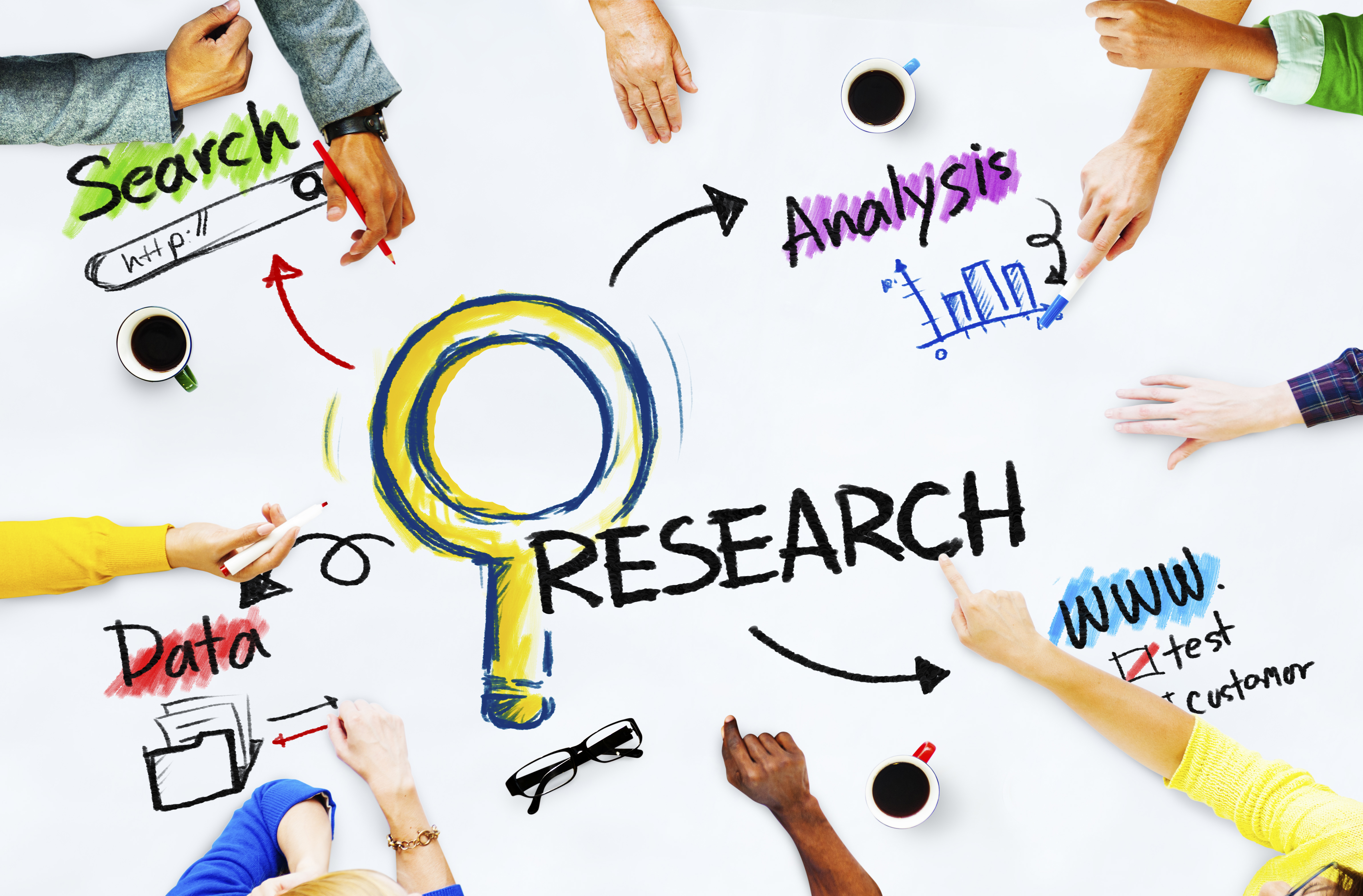



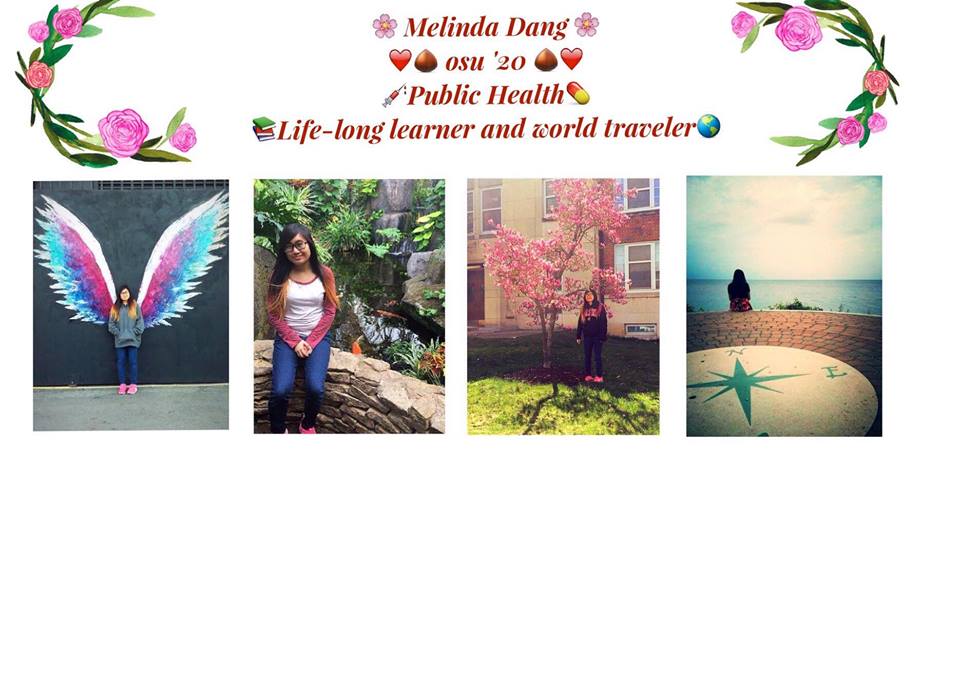



















.jpg/1280px-The_Ohio_State_University_December_2013_13_(Thompson_Library).jpg)













